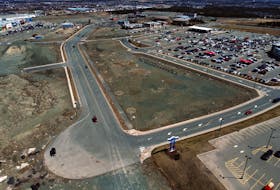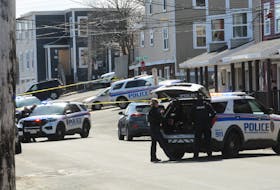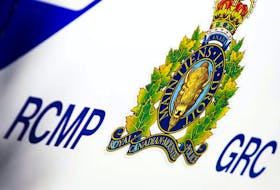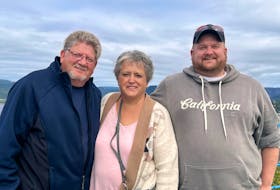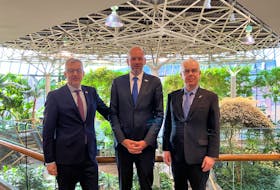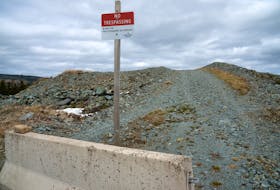BAY ST. GEORGE, N.L. — ROBINSONS
Troy Gilbert proud of measures being taken on salmon rivers and streams in the Bay St. George South area to try and rebuild salmon stocks.
That’s not only because he has been a long-time salmon angler. He's also as a supervisor on a project for monitoring and evaluating salmon rivers and streams in the area.
Gilbert came into the job, which is administered by the Bay St. George South Area Development Association, in June of this year and worked in conjunction with a Green Team and community volunteers.
One of the big jobs was to clear obstructions from rivers and tributaries from Crabbes River to Little Barachois River.
Gilbert said they came across a massive amount of beaver dams, along with a lot of fallen trees from wind storms in recent years.
Because a lot of debris comes down the streams during high water, they cut out fallen trees and moved them out of the waterways.
They couldn’t touch active beaver dams, so they concentrated on taking down the inactive ones and even then, had to acquire a permit for each one.
Gilbert said beavers are going to be a major problem on rivers and streams moving forward, especially now with a low price for their pelts, which discourages trappers from harvesting them.
“Trappers certainly don’t bother with them as much as they would have about five years ago” Gilbert said. "It’s hardly feasible."
Another initiative he was involved in was the inspection of culverts under the Trans-Canada Highway. During this six-week project, he checked for bank erosion and any severe blockages in the culverts themselves.
He estimated between 55 and 60 per cent of these culverts needed attention through some sort of modifications. The biggest problem was pooling at the outlets where salmon couldn’t get up during the summer.
With all the rain this fall, the fish were able to move upstream, but he said filling in those pooling areas is something that will likely need to be attended to before next summer.
From observations made by the team through different methods of counting salmon, Gilbert said everything was behind this year with grilse not moving upstream until the first week of August.
He said the big runs were in late September and early October and the salmon as fresh as you’d normally see them in the first week of June.
“There’s nothing written in stone, salmon will wait for the right conditions to go upstream,” Gilbert said.
He’s anticipating work will continue in other rivers in Bay St. George South in 2020 and more assessments will be done.
“Salmon rivers are very important to our area from not only a tourism perspective but also for conservation purposes,” Gilbert said.
[email protected]
Bay St. George South 2019 salmon restoration projects accomplishments:
• Green Team consisting of four students, including one supervisor, funded by Conservation Corps for the second year .
• Conducted a snorkel survey, with the help of 40 volunteers, on Robinson’s River, Little Barachois River and Middle Barachois River.
• Counting fence on Little Barachois River employed five people from early June to last week of September.
• Extensive amount of habitat restoration from Crabbes River to Little Barachois River.
• Project funded by Fisheries and Oceans Canada (DFO) for six weeks to assess culverts where fish may be migrating upstream and hampered from getting to where they spawn.
Source: Bay St. George South Area Development Association
Conservation efforts
Troy Gilbert says salmon river projects important to Bay St. George South area
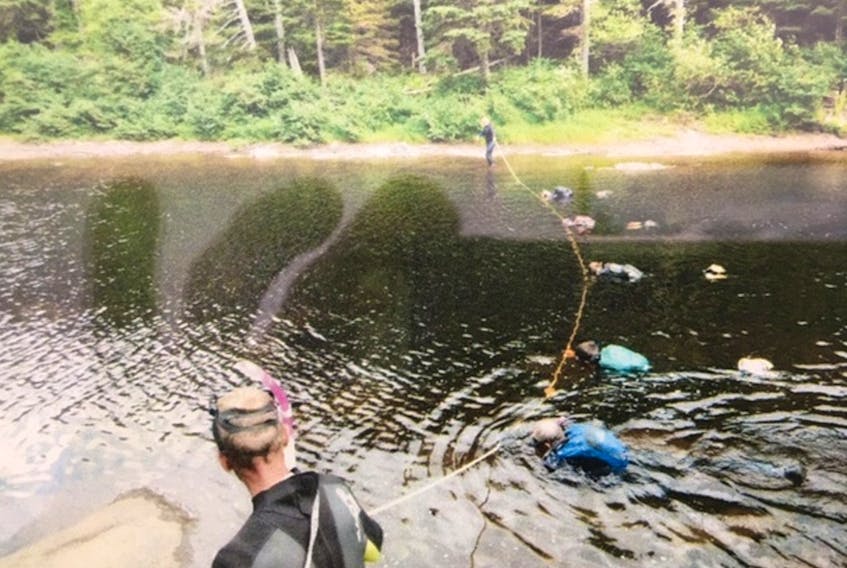
STORY CONTINUES BELOW THESE SALTWIRE VIDEOS
Two accused teenagers to remain in custody for at least two more weeks | SaltWire #newsupdate #news

